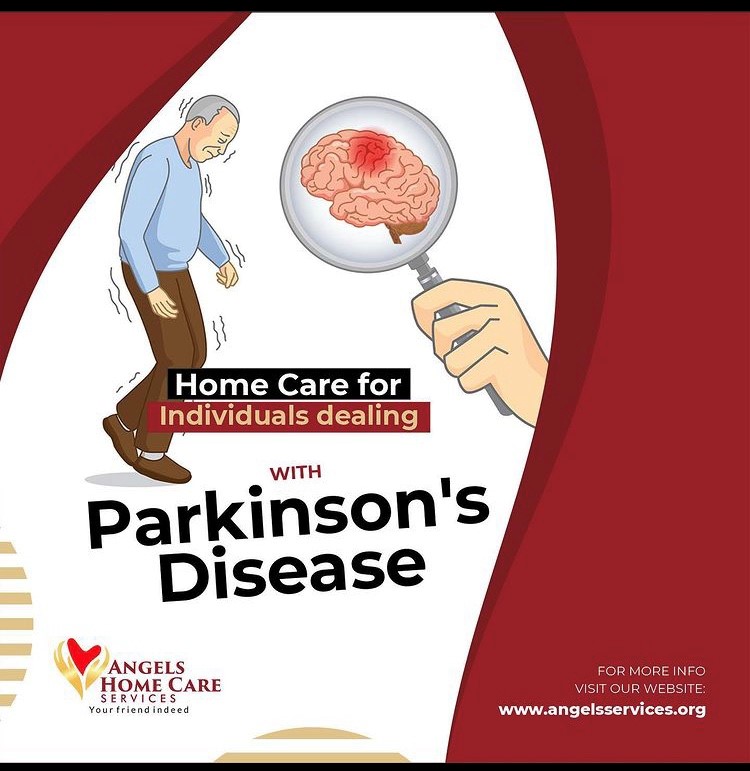
INTRODUCTION
Parkinson’s disease is a brain disorder that leads to shaking, stiffness, and difficulty with walking, balance, and coordination. It affects the dopamine-producing neurons (dopaminergic) in the brain. Dopamine is a brain chemical and neurotransmitter; it helps send electric signals around the brain and through the body. The disease prevents the best replica watches uk cell from making dopamine, and it may impair how well the brain can use dopamine. The drop in dopamine is often gradual. Over time, the cells will die replica watches entirely. Dopaminergic drugs are mostly used for Parkinson’s disease patients and it’s aimed at increasing the level of dopamine or making it more effective in the brain. A good knowledge of the symptoms and signs of Parkinson’s disease is very essential for any regwatches replica watches caregiver if the needed care has to be rendered.
Some of the early symptoms of Parkinson’s disease patient can come before motor problems by several years.
Symptoms of Parkinson’s Disease
These earliest signs includes:
• Decreased ability to smell (anosmia)
• Constipation
• Small, cramped handwriting
• Voice changes
• Stooped posture
• Tremor (shaking that occurs at rest)
• Slow movements
• Problems with balance and tendency to fall
Secondary symptoms include:
• Blank facial expression
• A tendency to get stuck when walking
• Muffled, low-volume speech
• Decreased blinking and swallowing
• Tendency to fall backward
• Reduced arm swinging when walking
• Increased risk of melanoma, a serious type of skin cancer
• Sleep disturbances including vivid dreams, talking, and movement during sleep
• Depression
• Anxiety
• Hallucinations
• Psychosis
• Problems with attention and memory
• Difficulty with visual-spatial relationships
HOW YOU CAN SUPPORT A PARKINSON’S DISEASE PATIENT AT HOME
Caring for a Parkinson’s disease patient can be demanding but caring for them in their homes makes the work easier for the caregiver. Best Replica Watches UK Sale– Swiss Rolex Clone Watches UK If you’re caring for Parkinson’s disease patient at home, some days you’ll need to assist them with daily tasks, other days you may just need to allow them to enjoy some independence.
The following checklist can make life easier for both the patient and the caregiver while caring for a loved one at home; Grooming: Make use of an electric toothbrush if their hands or fingers are stiff from Parkinson’s disease. If you help with flossing or brushing, try not to touch the back of their tongue, to prevent choking. Keep a small towel handy if drooling is an issue. An electric shaver may make shaving easier. After shaving, have them use lotion instead of aftershave, which may be too harsh.
Bathing: For safety and comfort, use the shower and have them sit on a shower stool and hold a grab bar if possible because bathtubs can be a falling hazard. Sometimes Parkinson’s disease causes dandruff and if it does, use a little shampoo with mild coal tar then wrap them up in an absorbent bath towel after bathing.
Getting Dressed: Make sure that clothes are easy to put on, such as pants with elastic waistbands, bras that hook in front, and tube socks instead of dress socks. Skip clothes that pull on over the head. If favourite clothes have buttons, replace them with zippers. Top Omega Replica Watches For Sales – Best Fake Omega Watches Shop Avoid shoes with rubber soles to avoid tripping. Lay out clothes ahead of time, in the order they like to put them on. Let them dress themselves as much as possible. Suggest that they sit down and dress on the side most affected first.
Eating: Serve fibre like whole grains, bran cereals, fruits, and vegetables to prevent constipation, a common symptom associated with Parkinson’s disease. If they are used to a low-fibre diet, add fibre slowly. Serve a calcium-rich food like Cheese, Yogurt, Milk, Sardines at least three times a day to prevent osteoporosis. This is a special concern with a person with Parkinson’s disease, because falls that can lead to fractures are more likely. Best Quality Cheap Hublot Replica Watches UK For Sale The Parkinson’s disease drug Levodopa is absorbed best on an empty stomach. Protein can decrease its absorption.
Activities: Don’t let their symptoms discourage participating in activities. Try relaxing activities to reduce stress, which can make symptoms worse. Listening to music and relaxation guided imagery may help ease tremors. Besides the daily exercise that their doctor probably suggests, urge them to exercise their face muscles, jaw, and mouth.
Conclusion
Parkinson’s disease symptoms usually begin gradually and get worse over time and going through the process in a familiar environment makes it less stressful. The daily tasks of caregiving can be hard for both patient and caregiver but the right understanding of the patient’s condition will make the work easier for the caregiver. As much as possible, focus on what your loved one can do. As the Disease progresses, people may have difficulty walking and talking but taking part in activities and hobbies will help them enjoy life more.
08139779499 E-mail: info@angelsservices.org or www.angelsservices.org
Mr. Uzoma C.


